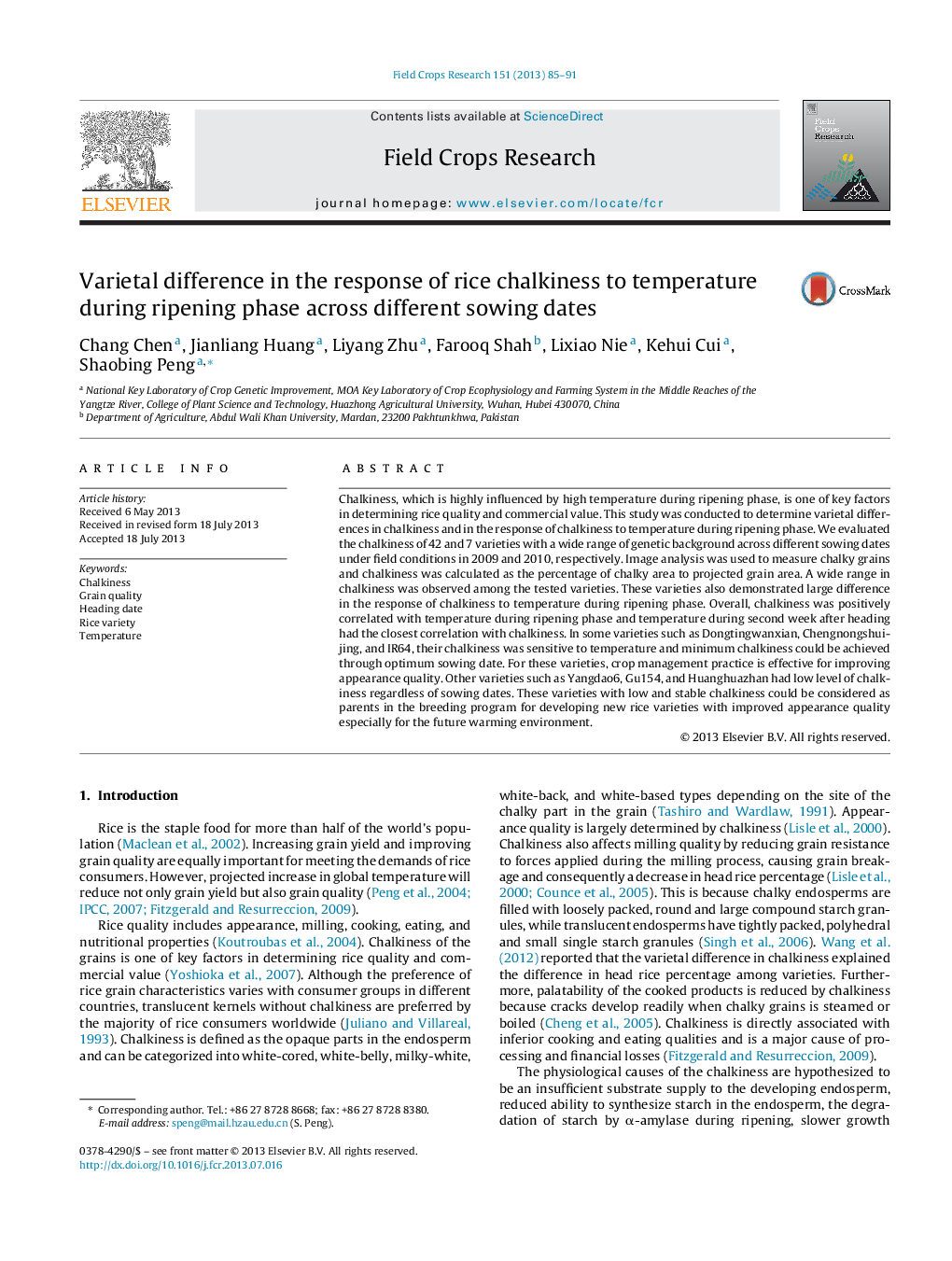| Article ID | Journal | Published Year | Pages | File Type |
|---|---|---|---|---|
| 4510185 | Field Crops Research | 2013 | 7 Pages |
•A wide range in chalkiness was observed among rice varieties.•Rice varieties were divided into three groups based on their response of chalkiness to temperature during ripening phase.•Temperature during second week after heading had the closest correlation with chalkiness.•For some varieties, optimization of sowing date could be used to reduce chalkiness.•The varieties with low and stable chalkiness would be useful genetic materials for high-quality rice breeding.
Chalkiness, which is highly influenced by high temperature during ripening phase, is one of key factors in determining rice quality and commercial value. This study was conducted to determine varietal differences in chalkiness and in the response of chalkiness to temperature during ripening phase. We evaluated the chalkiness of 42 and 7 varieties with a wide range of genetic background across different sowing dates under field conditions in 2009 and 2010, respectively. Image analysis was used to measure chalky grains and chalkiness was calculated as the percentage of chalky area to projected grain area. A wide range in chalkiness was observed among the tested varieties. These varieties also demonstrated large difference in the response of chalkiness to temperature during ripening phase. Overall, chalkiness was positively correlated with temperature during ripening phase and temperature during second week after heading had the closest correlation with chalkiness. In some varieties such as Dongtingwanxian, Chengnongshuijing, and IR64, their chalkiness was sensitive to temperature and minimum chalkiness could be achieved through optimum sowing date. For these varieties, crop management practice is effective for improving appearance quality. Other varieties such as Yangdao6, Gu154, and Huanghuazhan had low level of chalkiness regardless of sowing dates. These varieties with low and stable chalkiness could be considered as parents in the breeding program for developing new rice varieties with improved appearance quality especially for the future warming environment.
